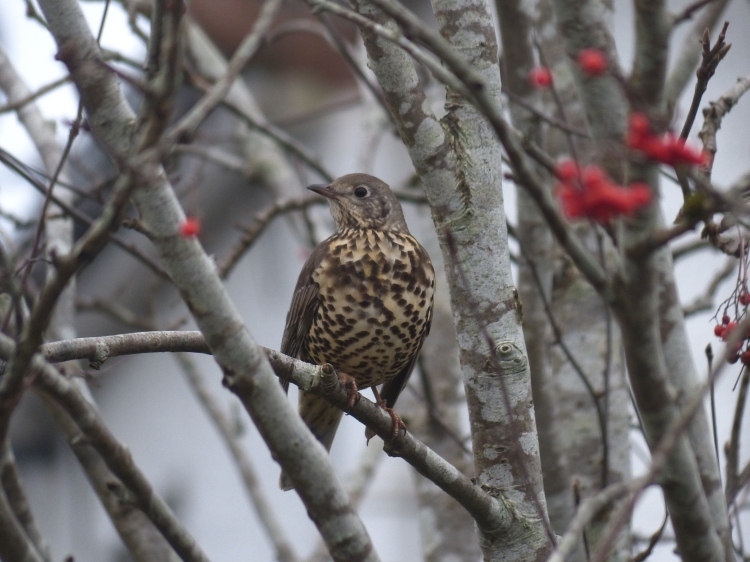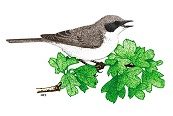Last December, a Mistle Thrush took up residence in our back garden. Or rather, it took over our garden! It was clearly distinguishable from its cousin the Song Thrush by its larger size and more horizontal spots, but mainly by its bold aggressive behaviour. It sat alert at the top of our rowan tree, like monarch of its realm.

Our rowan is a lovely mature tree, which had an abundance of berry clusters last autumn. The thrush immediately began to take possession of the tree, loudly threatening other species who came to eat the berries, especially middle-sized birds like blackbirds. It soon started to send other birds packing as soon as they entered the garden, by swift aggressive swooping down with a loud rattling call. Whenever we ourselves went out the back door, it took off with furious clucking, soon to return. It was no respecter of human-made boundaries, and chased all the birds in our neighbour’s garden as well. We were amused to note that it spent most of its time chasing other birds rather than eating the berries.
By late-January however, it had gone. We had assumed that it had been defending territory, possibly with a view to nesting, and we were therefore concerned that it may have died. Time to read up about Mistle Thrush behaviour!
The Mistle Thrush is so called because of its love of berries, particularly Mistletoe. In winter, single Mistle Thrushes will often defend berry-laden trees from other thrush species, in order to maintain a food supply through the colder months, while itself eating elsewhere nearby. So, the mystery is explained: its defence of the garden was nothing to do with establishing nesting territory, and not eating the abundant berries was because it was preserving them for later in the winter. We were relieved to realise that its departure probably just meant that the berries were finished, and that it had moved on.
Anne and Bill Gray
Editor’s comment: Thanks to Anne and Bill for sharing the first wildlife sighting on our new website. We hope that more will follow. If members would like to share stories and/or photographs of the wildlife you have seen around Renfrewshire then please do get in touch. We would love to hear from you.
